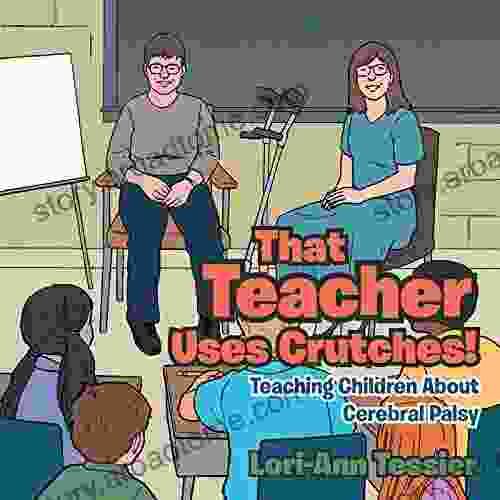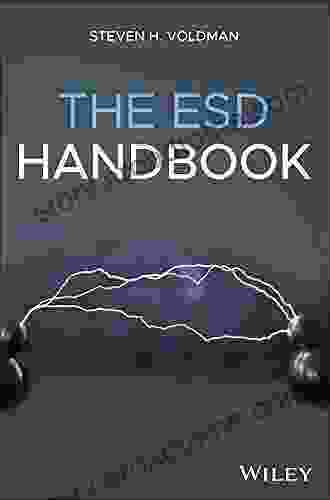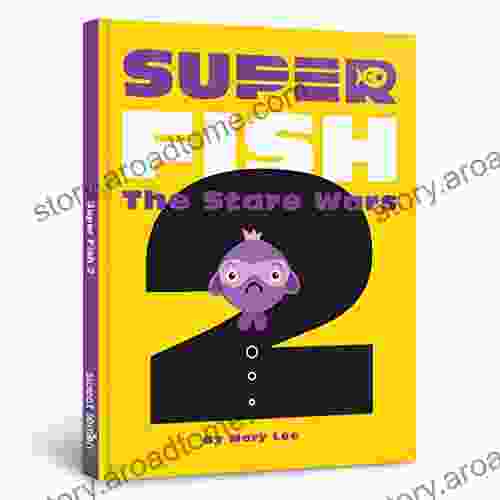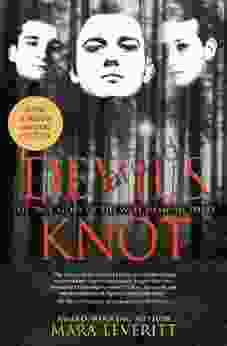Teaching Children About Cerebral Palsy: Nurturing Understanding and Inclusion

4.2 out of 5
| Language | : | English |
| File size | : | 2708 KB |
| Text-to-Speech | : | Enabled |
| Enhanced typesetting | : | Enabled |
| Word Wise | : | Enabled |
| Print length | : | 24 pages |
| Screen Reader | : | Supported |
Cerebral palsy, a condition that affects a child's movement and coordination, can be a challenging concept for children to understand. However, fostering their understanding is crucial for creating inclusive and supportive environments. This comprehensive article provides educators, parents, and caregivers with valuable insights into teaching children about cerebral palsy, empowering them with knowledge, empathy, and a commitment to inclusion.
Understanding Cerebral Palsy
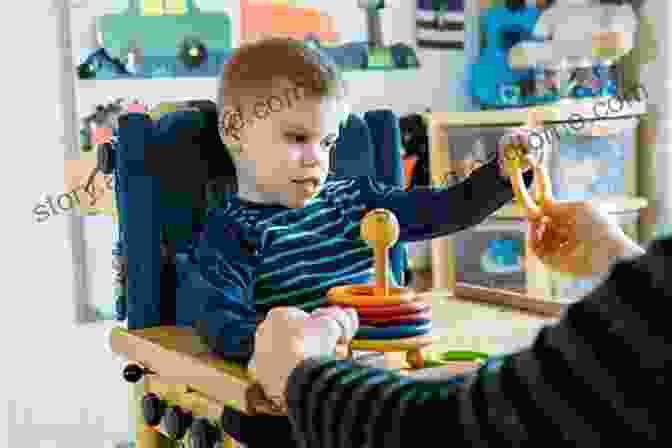 Cerebral palsy refers to a group of disFree Downloads that affect a child's brain and nervous system, impacting their ability to control movement and maintain balance. It is typically caused by damage to the developing brain, often occurring before or during birth. Cerebral palsy can vary significantly in severity, with symptoms ranging from mild to severe.
Cerebral palsy refers to a group of disFree Downloads that affect a child's brain and nervous system, impacting their ability to control movement and maintain balance. It is typically caused by damage to the developing brain, often occurring before or during birth. Cerebral palsy can vary significantly in severity, with symptoms ranging from mild to severe.
Types of Cerebral Palsy
Different types of cerebral palsy are classified based on the areas of the brain affected:
- Spastic cerebral palsy: Muscles stay contracted, leading to stiffness and difficulty moving.
- Athetoid cerebral palsy: Involuntary, writhing movements affect the arms, legs, and head.
- Ataxic cerebral palsy: Problems with balance, coordination, and fine motor skills.
- Mixed cerebral palsy: A combination of different types.
Teaching Children About Cerebral Palsy
Approaching discussions about cerebral palsy with sensitivity and clarity is essential. Here are some effective strategies:
Start with Empathy and Understanding
Explain to children that cerebral palsy is a part of the person, not a flaw or disability. Emphasize the importance of treating individuals with respect and kindness.
Use Clear and Age-Appropriate Language
Use simple and understandable language that children can relate to. Avoid medical jargon and focus on explaining the condition in a way they can comprehend.
Involve Visual Aids and Demonstrations
Show children pictures or videos of individuals with cerebral palsy engaging in various activities. This helps them visualize the condition and its impact.
Create Inclusive Activities
Plan activities that involve children with and without cerebral palsy, fostering interaction and understanding. This promotes a sense of belonging and cooperation.
Address Common Misconceptions
Discuss common misconceptions about cerebral palsy, such as the belief that it is contagious or a sign of low intelligence. Clear up these misunderstandings to promote accurate perceptions.
Encourage Questions and Open Dialogue
Create a safe and supportive environment where children can ask questions and express their thoughts and feelings. Answer their questions honestly and respectfully.
Resources for Teaching and Learning
Various resources can support your efforts to teach children about cerebral palsy:
Books for Children
- My Three Best Friends by Judith Vigna: A heartwarming story about friendship and inclusion.
- When My Sister Got Sick: A Brother's Story by Barbara Seuling: Explores the impact of a sibling with cerebral palsy.
- Just Like Me and You by Lisa Regan: Teaches children about different disabilities, including cerebral palsy.
Websites and Organizations
- Centers for Disease Control and Prevention (CDC)
- United Cerebral Palsy
- Cerebral Palsy Guide
Teaching children about cerebral palsy is a meaningful opportunity to foster empathy, understanding, and inclusion. By providing them with accurate information, creating supportive environments, and engaging in open dialogue, we can empower them to embrace diversity and create a society where everyone feels valued and respected. Remember that every child deserves to be celebrated for their unique abilities and experiences, regardless of their physical differences. Let us continue to nurture young minds with knowledge, compassion, and a commitment to making the world a more inclusive place for all.
4.2 out of 5
| Language | : | English |
| File size | : | 2708 KB |
| Text-to-Speech | : | Enabled |
| Enhanced typesetting | : | Enabled |
| Word Wise | : | Enabled |
| Print length | : | 24 pages |
| Screen Reader | : | Supported |
Do you want to contribute by writing guest posts on this blog?
Please contact us and send us a resume of previous articles that you have written.
 Book
Book Novel
Novel Page
Page Chapter
Chapter Text
Text Story
Story Genre
Genre Reader
Reader Library
Library Paperback
Paperback E-book
E-book Magazine
Magazine Newspaper
Newspaper Paragraph
Paragraph Sentence
Sentence Bookmark
Bookmark Shelf
Shelf Glossary
Glossary Bibliography
Bibliography Foreword
Foreword Preface
Preface Synopsis
Synopsis Annotation
Annotation Footnote
Footnote Manuscript
Manuscript Scroll
Scroll Codex
Codex Tome
Tome Bestseller
Bestseller Classics
Classics Library card
Library card Narrative
Narrative Biography
Biography Autobiography
Autobiography Memoir
Memoir Reference
Reference Encyclopedia
Encyclopedia Linda Hall
Linda Hall R S Rodella
R S Rodella Leonard Shengold
Leonard Shengold Leonard Smith
Leonard Smith Scott Stonington
Scott Stonington Lesley Maroni
Lesley Maroni M Dale Campbell
M Dale Campbell Manon Boudreau
Manon Boudreau Maja D Aoust
Maja D Aoust Rory Jones
Rory Jones Lewis Glinert
Lewis Glinert Mark Carey
Mark Carey Mac Walters
Mac Walters M V Pipkin
M V Pipkin Lionel Harlan
Lionel Harlan Lucy Agace
Lucy Agace Mark Victor Hansen
Mark Victor Hansen Robert Rodgers
Robert Rodgers M Therese Lysaught
M Therese Lysaught Manuel Gausa
Manuel Gausa
Light bulbAdvertise smarter! Our strategic ad space ensures maximum exposure. Reserve your spot today!
 Gene SimmonsFollow ·18.3k
Gene SimmonsFollow ·18.3k Milan KunderaFollow ·3.6k
Milan KunderaFollow ·3.6k Felix HayesFollow ·7.2k
Felix HayesFollow ·7.2k William PowellFollow ·6.5k
William PowellFollow ·6.5k Anton ChekhovFollow ·12.7k
Anton ChekhovFollow ·12.7k Branden SimmonsFollow ·12.1k
Branden SimmonsFollow ·12.1k Langston HughesFollow ·10.2k
Langston HughesFollow ·10.2k Aubrey BlairFollow ·2.7k
Aubrey BlairFollow ·2.7k

 E.M. Forster
E.M. ForsterThe Real Blueprint to Short-Term Rental Success
Are you ready to create a...

 Mark Mitchell
Mark MitchellMidas Touch: The Astrology Of Wealth
Are you ready to tap into the cosmic forces...

 Grant Hayes
Grant HayesPrecarious Creativity: Unpacking the Global Media and...
In the ever-evolving landscape of the...

 Cameron Reed
Cameron ReedGuru Govind Singh: A Life of Courage and Inspiration for...
Guru Govind Singh, the tenth Sikh guru,...

 Yukio Mishima
Yukio MishimaCastles & Shapes: The Enchanting World of Ris...
In the realm of...

 Jerome Blair
Jerome BlairGolden Keys To Jyotisha Volume Ten: The Ultimate Guide to...
Embark on an...
4.2 out of 5
| Language | : | English |
| File size | : | 2708 KB |
| Text-to-Speech | : | Enabled |
| Enhanced typesetting | : | Enabled |
| Word Wise | : | Enabled |
| Print length | : | 24 pages |
| Screen Reader | : | Supported |


